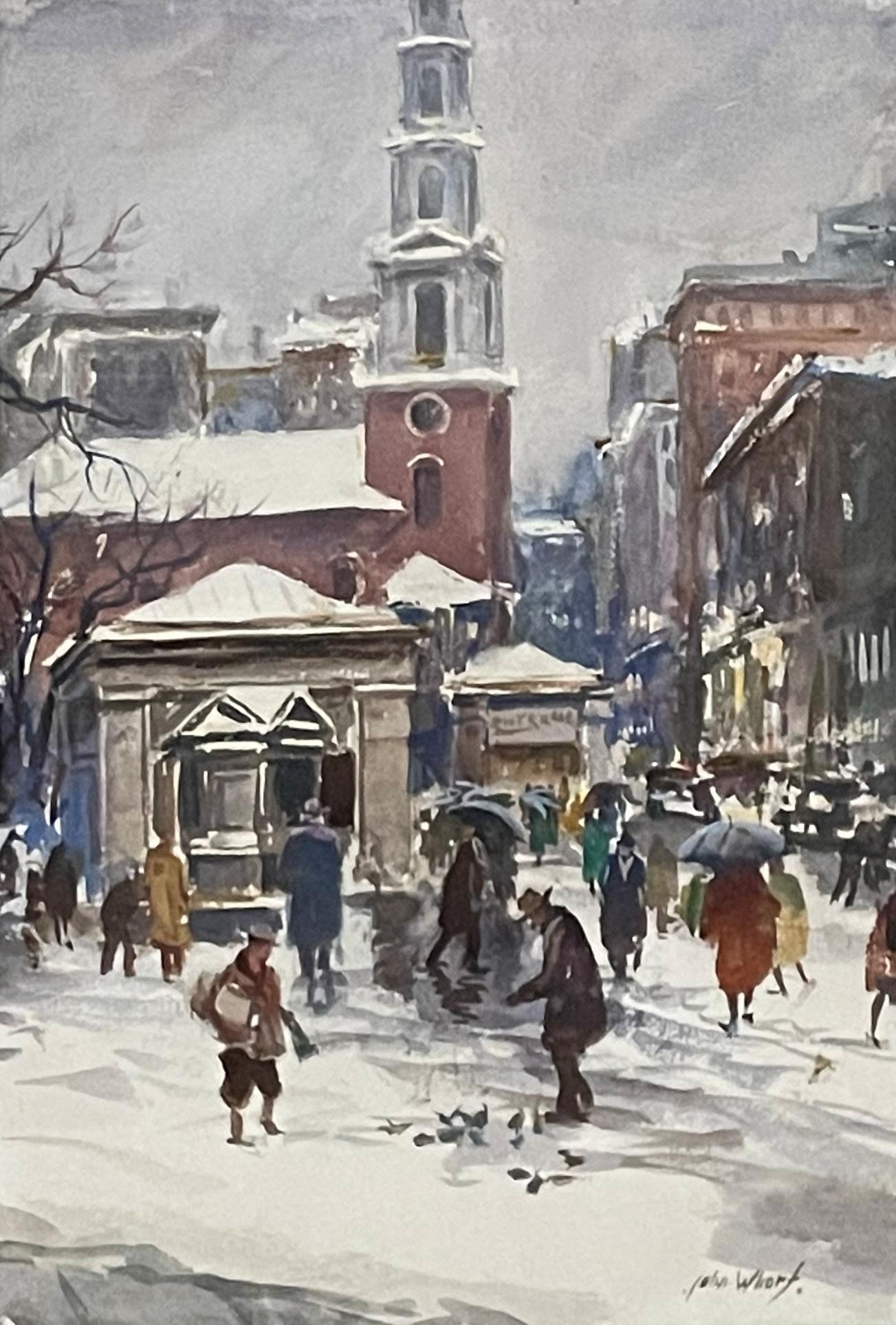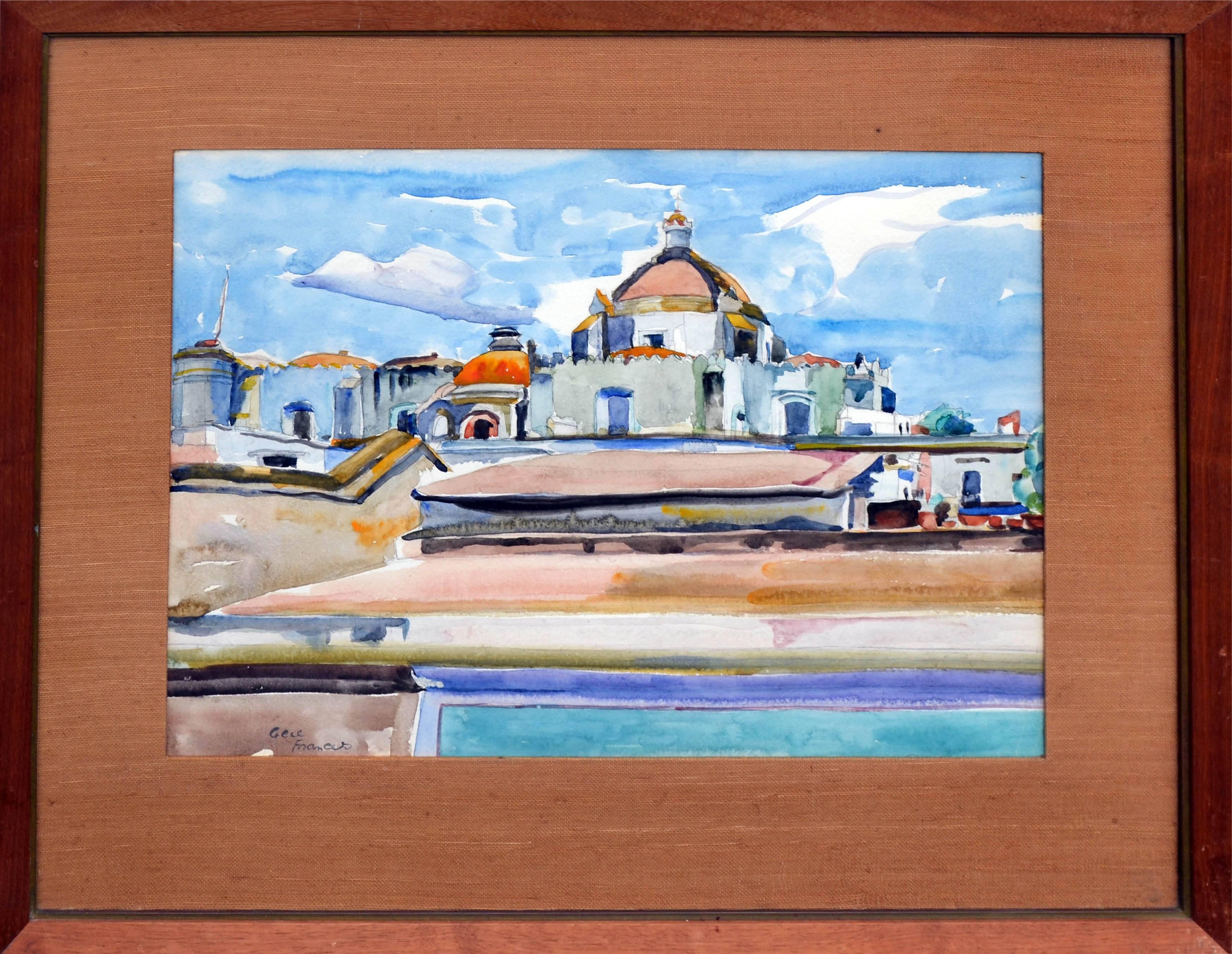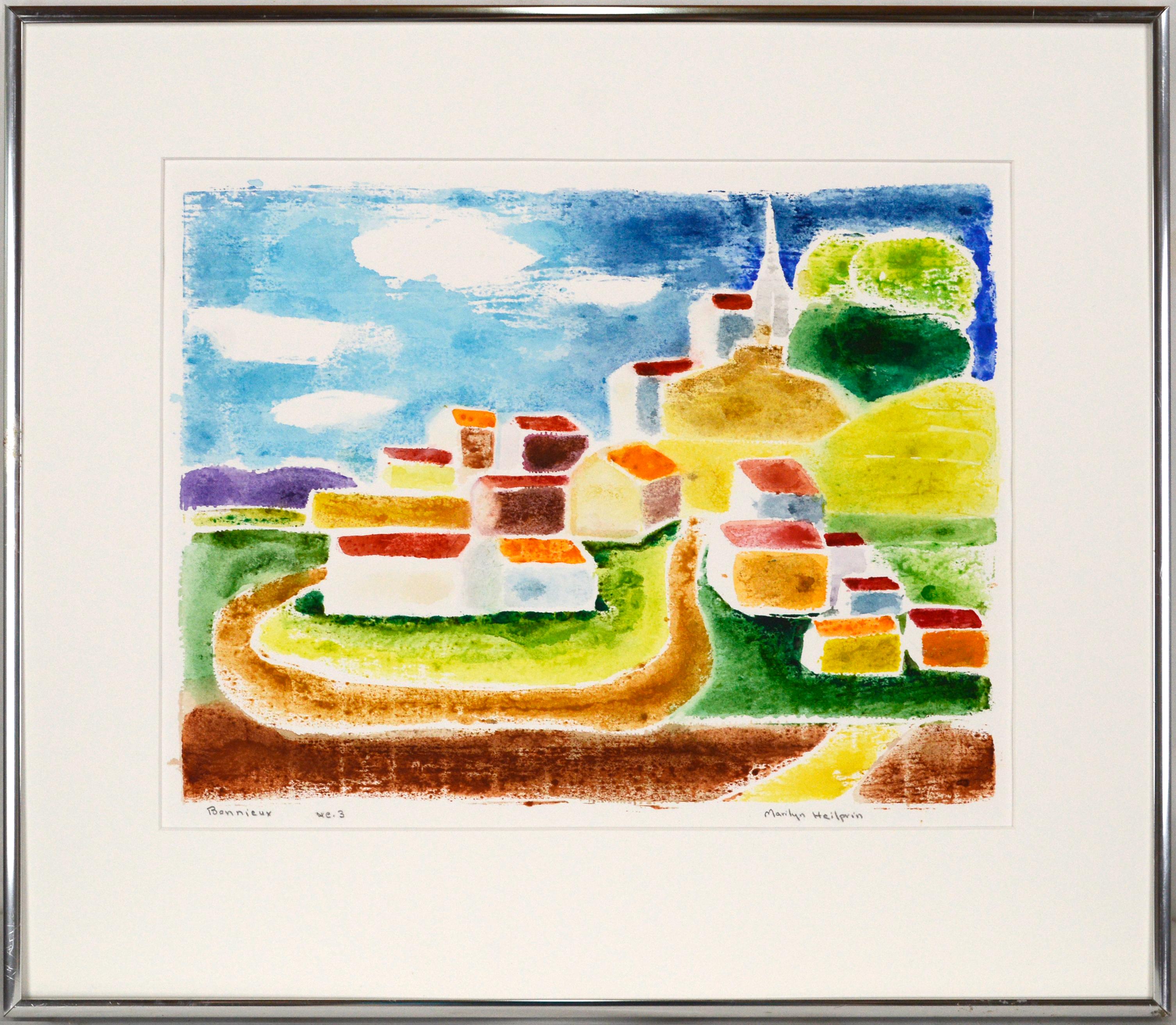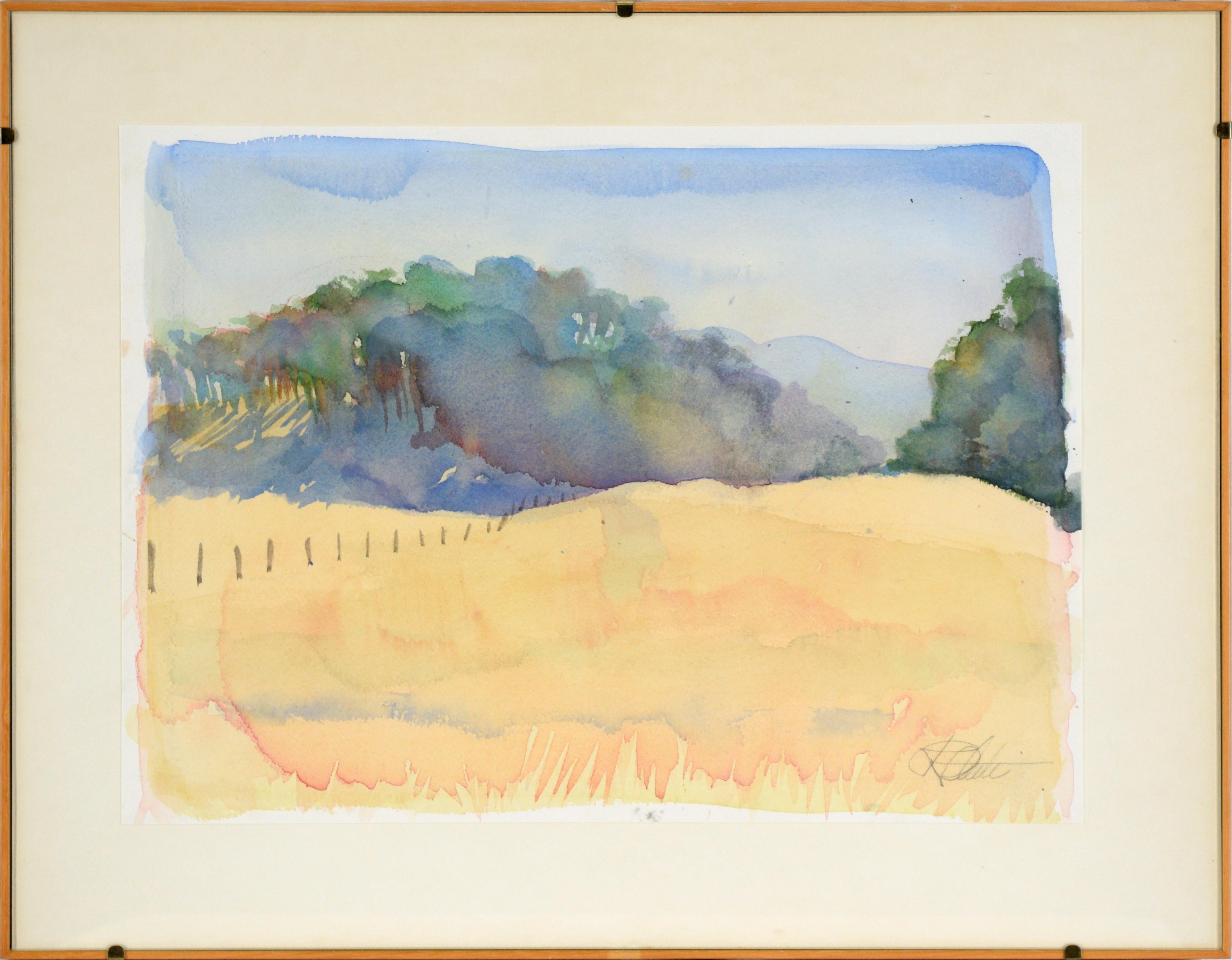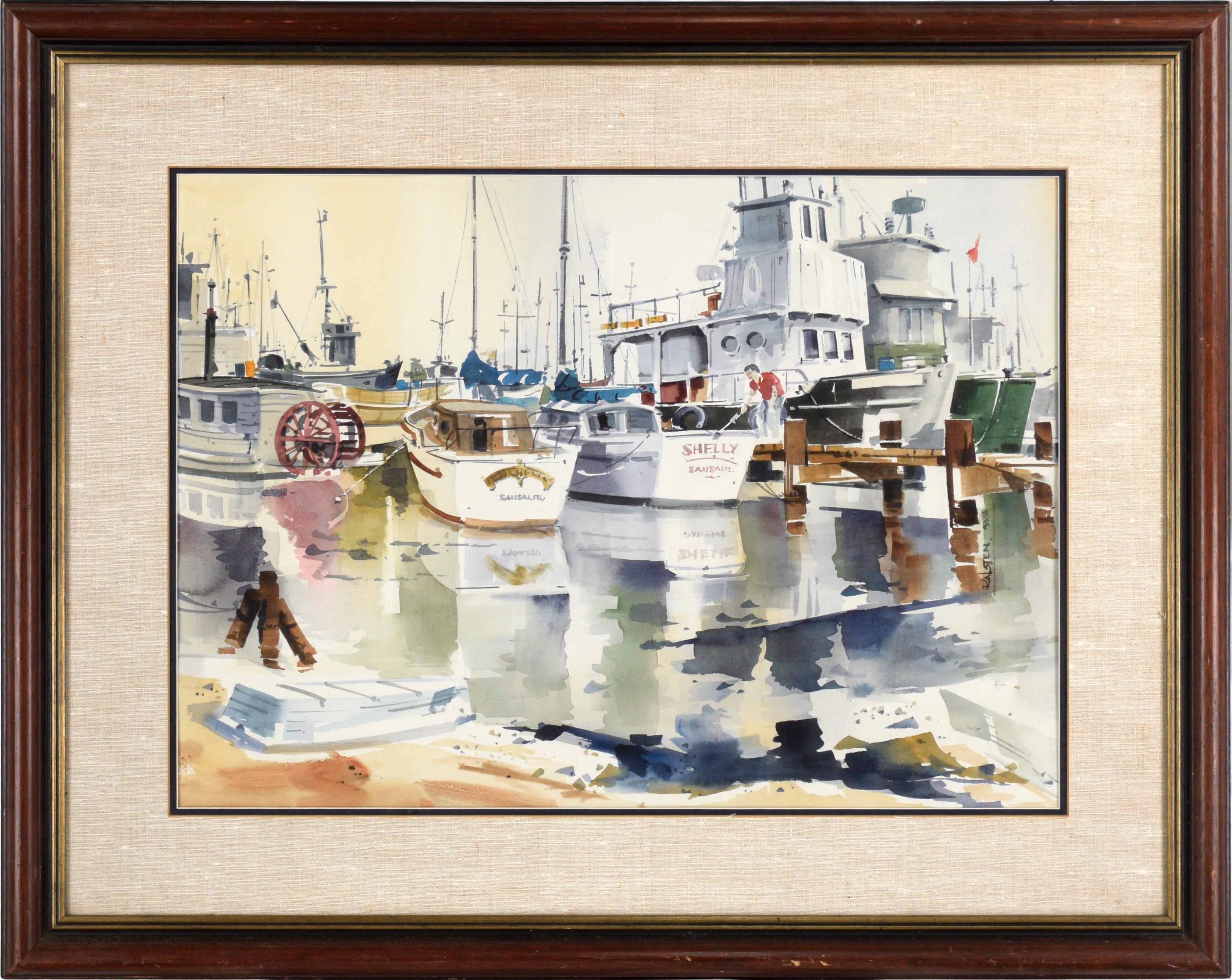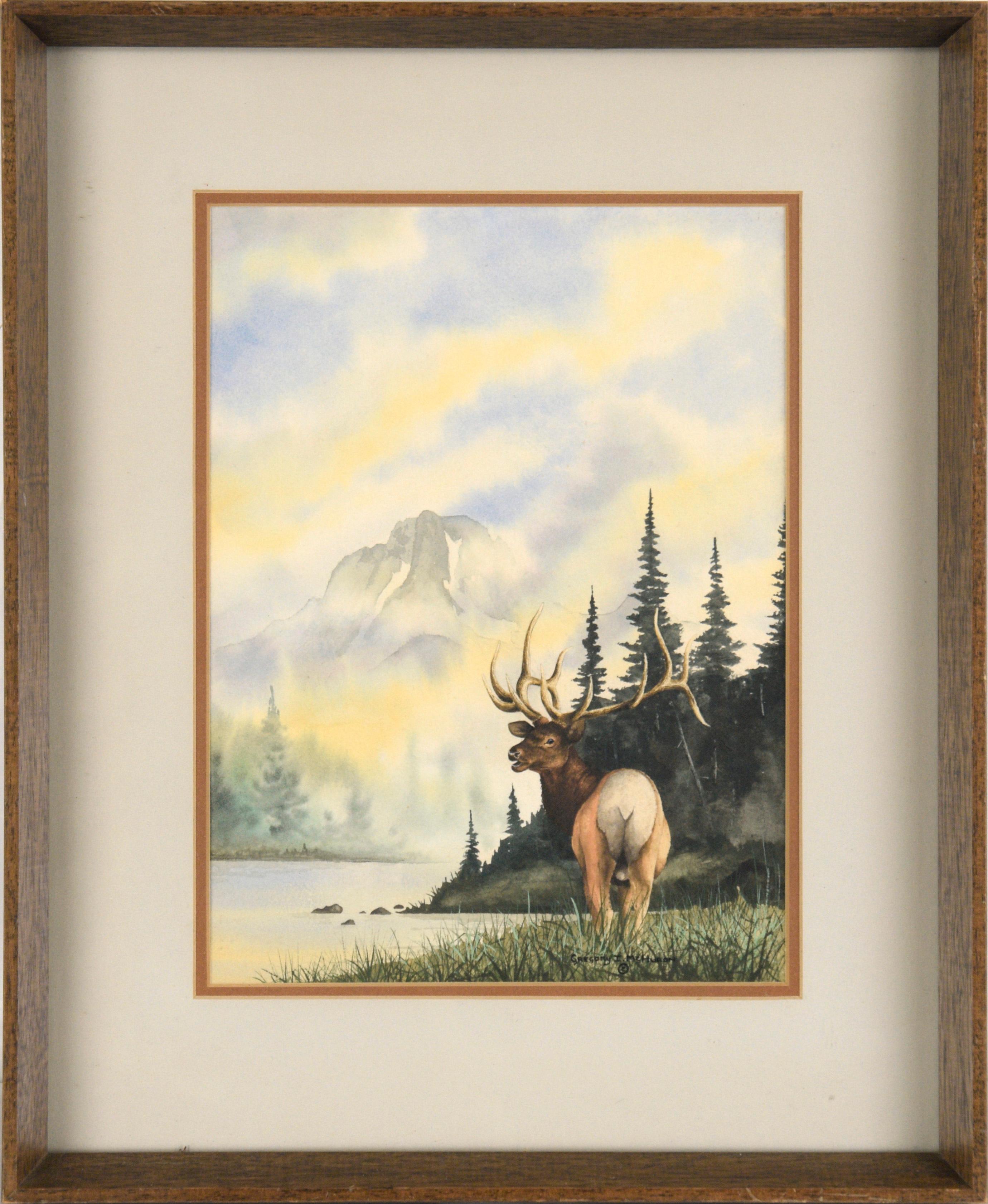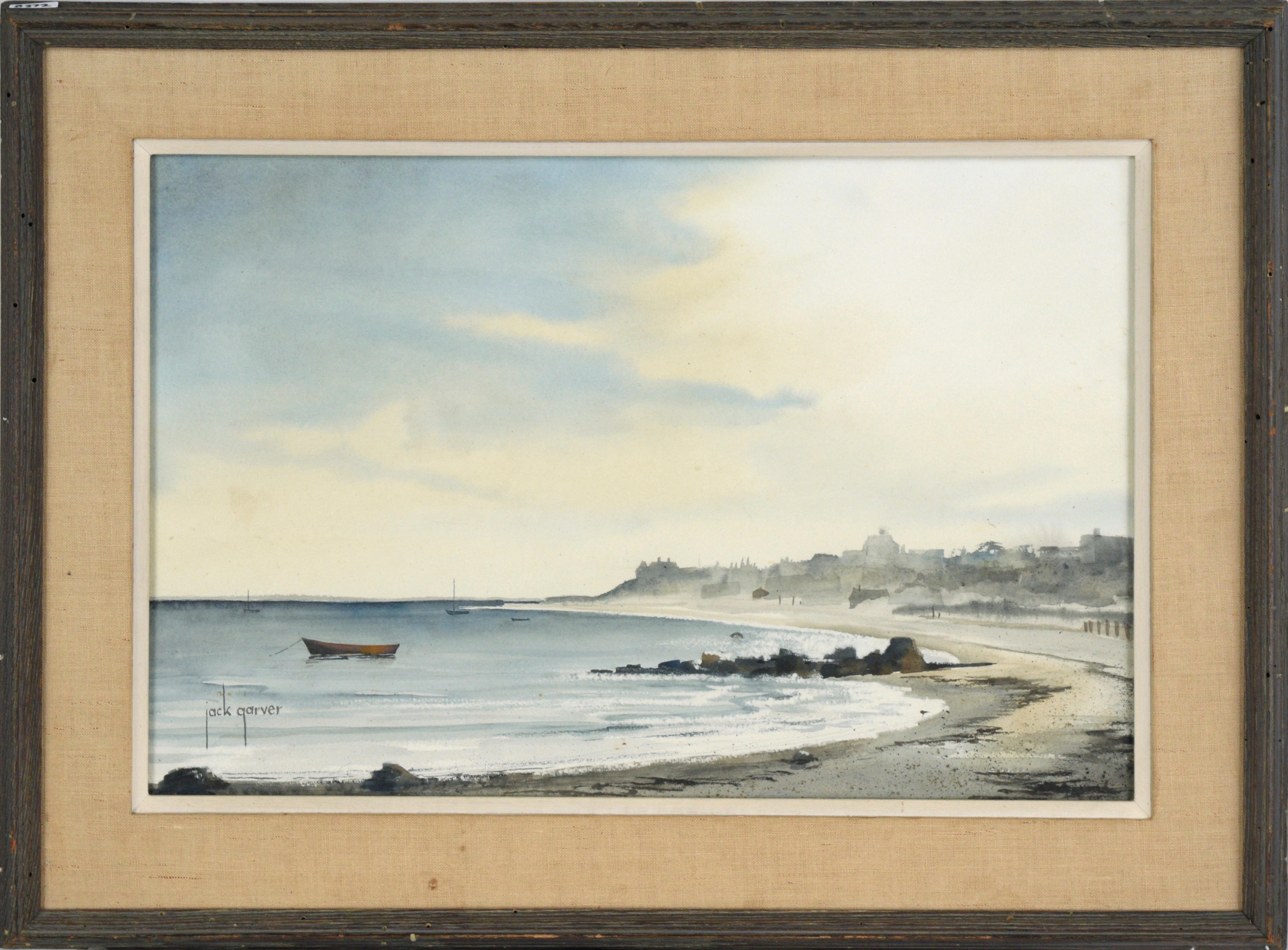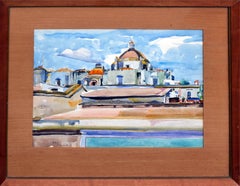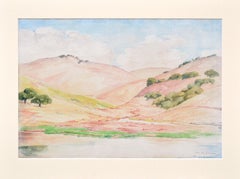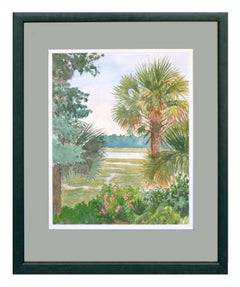
Southwest Village
View Similar Items
Want more images or videos?
Request additional images or videos from the seller
1 of 9
Brian T. KellerSouthwest Village1980
1980
About the Item
- Creator:Brian T. Keller (American)
- Creation Year:1980
- Dimensions:Height: 25 in (63.5 cm)Width: 37 in (93.98 cm)Depth: 1 in (2.54 cm)
- Medium:
- Movement & Style:
- Period:
- Condition:Excellent condition.
- Gallery Location:Soquel, CA
- Reference Number:Seller: SJ28511stDibs: LU5421575223
About the Seller
4.9
Platinum Seller
These expertly vetted sellers are 1stDibs' most experienced sellers and are rated highest by our customers.
Established in 1986
1stDibs seller since 2014
2,519 sales on 1stDibs
More From This SellerView All
- Mid Century Mexico Cathedral Watercolor LandscapeBy Eugenia Frances Baker McComasLocated in Soquel, CAVibrant Mexico Cathedral by Eugenia Francis Baker McComas (American, 1886-1982). Presented in a wooden frame. Shipped without glass. Signed "Gene Frances" lower left. Image size, 15"H x 19"W. Eugenia Frances Baker McComas was born in San Francisco, California on September 6, 1886. She came from a family of journalists where her father Joseph Eugene Baker was the editor of the Alta Californian, now San Francisco Examiner, and her mother was a theater critic for The Oakland Tribune. Eugenia also known as “Gene” worked as a journalist for The Oakland Tribune for a period of time. She also studied at the California School of Arts and Crafts under artist Xavier Martinez. She met artist Francis McComas...Category
1950s American Impressionist Landscape Paintings
MaterialsPaper, Watercolor
$2,000 Sale Price20% Off - Aromas California Pink and Gold Hills Landscape by Cor de Gavere Jolly DaubersBy Cor de GavereLocated in Soquel, CAVibrant California landscape consisting of pink and gold rolling hills, oak trees, and a body of water in the foreground. Signed twice, by the artist in the lower right corner, once ...Category
Early 20th Century American Impressionist Landscape Paintings
MaterialsWatercolor, Laid Paper
- 1930's California Watercolor Landscape -- "Palm Trees"By Margaret E. RogersLocated in Soquel, CAWonderful 1930s watercolor California landscape with iconic palm trees by Santa Cruz artist Margaret E. Rogers (American, 1872-1961). Titled "Palm Trees" and signed "Margaret Rogers" on verso. Presented in a wooden frame. Image, 14"H x 12"L. Born in Birmingham, England on May 1, 1872, the Rogers family immigrated to California in 1875 and established a prosperous sheep ranch in Monterey County. In her youth Margaret was known as one of the finest horsewomen in the West. The magazine Western Woman...Category
1930s American Impressionist Landscape Paintings
MaterialsWatercolor, Laid Paper
$1,080 Sale Price20% Off - Bonnieux Village Luberon FranceLocated in Soquel, CABonnieux Village Luberon France Bright and expressive white line woodcut in watercolor of Bonnieux Village Luberon France by Marilyn Heyman Marilyn H. Heilprin, (American, 1926-2020). Heilprin is an author, poet and artist from Bethesda, Maryland. Signed lower right "Marilyn Heilprin, titled lower left "Bonnieux WC 3 (watercolor #3). Marilyn Heilprin was born in New York City and has a B.A. from Smith College (1948) and M.A. in international relations from The American University (1963). A former research associate, writer and editor for federal agencies and private publishers, she attended writing workshops at Breadloaf, The American University, and Writers' Center in Bethesda, MD. She has published poems in literary journals and was a finalist in the Maryland State Poetry and Literary Society chapbook contests. She co-authored Leo Saal's memoir "Crossings: A Life in Russia and Germany in the First Half of the 20th Century." Feb. 2020, Marilyn Heilprin, 93, a retired editor, writer and researcher who created one of the earliest compendiums of international statistics and organizations. Image, 9"H x 12"W Sheet, 14.5"H x 16.5"W Frame, 15.25"H 17"W x .5"D Mrs. Heilprin, a former resident of Bethesda, Md., was born Marilyn Heyman in New York City. In the 1950s, she was a researcher and writer on handbooks about Mongolia, Finland, Germany, Austria, Lebanon, Syria and Israel for the Washington-area branch of the Human Relations Area Files, a nonprofit formed by several universities. The "Provincetown Print", a white-line woodcut print. Rather than creating separate woodblocks for each color, one block was made and painted. Small groves between the elements of the design created the white line. Because the artists often used soft colors, they sometimes have the appearance of a watercolor painting. Marilyn Heilprin, Ruth Cahnmann, George Chung, Susana deQuadros, Susan Due Pearcy, Leo Saal and Ann Zahn...Category
Early 2000s American Impressionist Landscape Paintings
MaterialsWoodcut, Watercolor, Laid Paper
- Golden Hills - California Landscape in Watercolor on PaperLocated in Soquel, CAGolden Hills - California Landscape in Watercolor on Paper Lively watercolor by notable California artist Robert Gantt Steele (American, b. 1946). A simple wood fence runs along a golden hill, drawing the viewer's eye to the mid ground. There, a line of trees casts shadows on the hillside. A rich blue sky completes the scene. Signed "R Steele" in the lower right corner Presented "floating" in a simple wood frame Frame size: 16"H x 20"W Paper size: 11.75"H x 15.5"W Robert G. Steele (American, b. 1946) was originally trained as an architect and studied art in Austria as a Fulbright scholar. He has painted for Broadway productions, Smithsonian Magazine, the National Park Service...Category
21st Century and Contemporary American Impressionist Landscape Paintings
MaterialsPaper, Watercolor
- Boats at Sausalito Harbor - Watercolor on PaperLocated in Soquel, CABoats at Sausalito Harbor - Watercolor on Paper Harbor scene by Bay Area artist Ralsten (American, 20th Century). Many boats are docked in the harbor. One of them is being cleaned b...Category
Late 20th Century American Impressionist Landscape Paintings
MaterialsPaper, Watercolor
$760 Sale Price20% Off
You May Also Like
- "Train Station, " Max Kuehne, Industrial City Scene, American ImpressionismBy Max KuehneLocated in New York, NYMax Kuehne (1880 - 1968) Train Station, circa 1910 Watercolor on paper 8 1/4 x 10 1/4 inches Signed lower right Provenance: Private Collection, Illinois Max Kuehne was born in Halle, Germany on November 7, 1880. During his adolescence the family immigrated to America and settled in Flushing, New York. As a young man, Max was active in rowing events, bicycle racing, swimming and sailing. After experimenting with various occupations, Kuehne decided to study art, which led him to William Merritt Chase's famous school in New York; he was trained by Chase himself, then by Kenneth Hayes Miller. Chase was at the peak of his career, and his portraits were especially in demand. Kuehne would have profited from Chase's invaluable lessons in technique, as well as his inspirational personality. Miller, only four years older than Kuehne, was another of the many artists to benefit from Chase's teachings. Even though Miller still would have been under the spell of Chase upon Kuehne's arrival, he was already experimenting with an aestheticism that went beyond Chase's realism and virtuosity of the brush. Later Miller developed a style dependent upon volumetric figures that recall Italian Renaissance prototypes. Kuehne moved from Miller to Robert Henri in 1909. Rockwell Kent, who also studied under Chase, Miller, and Henri, expressed what he felt were their respective contributions: "As Chase had taught us to use our eyes, and Henri to enlist our hearts, Miller called on us to use our heads." (Rockwell Kent, It's Me O Lord: The Autobiography of Rockwell Kent. New York: Dodd, Mead and Co., 1955, p. 83). Henri prompted Kuehne to search out the unvarnished realities of urban living; a notable portion of Henri's stylistic formula was incorporated into his work. Having received such a thorough foundation in art, Kuehne spent a year in Europe's major art museums to study techniques of the old masters. His son Richard named Ernest Lawson as one of Max Kuehne's European traveling companions. In 1911 Kuehne moved to New York where he maintained a studio and painted everyday scenes around him, using the rather Manet-like, dark palette of Henri. A trip to Gloucester during the following summer engendered a brighter palette. In the words of Gallatin (1924, p. 60), during that summer Kuehne "executed some of his most successful pictures, paintings full of sunlight . . . revealing the fact that he was becoming a colorist of considerable distinction." Kuehne was away in England the year of the Armory Show (1913), where he worked on powerful, painterly seascapes on the rocky shores of Cornwall. Possibly inspired by Henri - who had discovered Madrid in 1900 then took classes there in 1906, 1908 and 1912 - Kuehne visited Spain in 1914; in all, he would spend three years there, maintaining a studio in Granada. He developed his own impressionism and a greater simplicity while in Spain, under the influence of the brilliant Mediterranean light. George Bellows convinced Kuehne to spend the summer of 1919 in Rockport, Maine (near Camden). The influence of Bellows was more than casual; he would have intensified Kuehne's commitment to paint life "in the raw" around him. After another brief trip to Spain in 1920, Kuehne went to the other Rockport (Cape Ann, Massachusetts) where he was accepted as a member of the vigorous art colony, spearheaded by Aldro T. Hibbard. Rockport's picturesque ambiance fulfilled the needs of an artist-sailor: as a writer in the Gloucester Daily Times explained, "Max Kuehne came to Rockport to paint, but he stayed to sail." The 1920s was a boom decade for Cape Ann, as it was for the rest of the nation. Kuehne's studio in Rockport was formerly occupied by Jonas Lie. Kuehne spent the summer of 1923 in Paris, where in July, André Breton started a brawl as the curtain went up on a play by his rival Tristan Tzara; the event signified the demise of the Dada movement. Kuehne could not relate to this avant-garde art but was apparently influenced by more traditional painters — the Fauves, Nabis, and painters such as Bonnard. Gallatin perceived a looser handling and more brilliant color in the pictures Kuehne brought back to the States in the fall. In 1926, Kuehne won the First Honorable Mention at the Carnegie Institute, and he re-exhibited there, for example, in 1937 (Before the Wind). Besides painting, Kuehne did sculpture, decorative screens, and furniture work with carved and gilded molding. In addition, he designed and carved his own frames, and John Taylor Adams encouraged Kuehne to execute etchings. Through his talents in all these media he was able to survive the Depression, and during the 1940s and 1950s these activities almost eclipsed his easel painting. In later years, Kuehne's landscapes and still-lifes show the influence of Cézanne and Bonnard, and his style changed radically. Max Kuehne died in 1968. He exhibited his work at the National Academy of Design, the Art Institute of Chicago, the Carnegie Institute in Pittsburgh, the Memorial Art Gallery of the University of Rochester, and in various New York City galleries. Kuehne's works are in the following public collections: the Detroit Institute of Arts (Marine Headland), the Whitney Museum (Diamond Hill...Category
1910s American Impressionist Landscape Drawings and Watercolors
MaterialsPaper, Watercolor
- "Monhegan Island, Maine, " Edward Dufner, American Impressionism Landscape ViewBy Edward DufnerLocated in New York, NYEdward Dufner (1872 - 1957) Monhegan Island, Maine Watercolor on paper Sight 16 x 20 inches Signed lower right With a long-time career as an art teacher and painter of both 'light' and 'dark', Edward Dufner was one of the first students of the Buffalo Fine Arts Academy to earn an Albright Scholarship to study painting in New York. In Buffalo, he had exchanged odd job work for drawing lessons from architect Charles Sumner. He also earned money as an illustrator of a German-language newspaper, and in 1890 took lessons from George Bridgman at the Buffalo Fine Arts Academy. In 1893, using his scholarship, Dufner moved to Manhattan and enrolled at the Art Students League where he studied with Henry Siddons Mowbray, figure painter and muralist. He also did illustration work for Life, Harper's and Scribner's magazines. Five years later, in 1898, Dufner went to Paris where he studied at the Academy Julian with Jean-Paul Laurens and privately with James McNeill Whistler. Verification of this relationship, which has been debated by art scholars, comes from researcher Nancy Turk who located at the Smithsonian Institution two 1927 interviews given by Dufner. Turk wrote that Dufner "talks in detail about Whistler, about how he prepared his canvasas and about numerous pieces he painted. . . A great read, the interview puts to bed" the ongoing confusion about whether or not he studied with Whistler. During his time in France, Dufner summered in the south at Le Pouleu with artists Richard Emil Miller...Category
Early 20th Century American Impressionist Landscape Drawings and Waterco...
MaterialsPaper, Watercolor
$4,800 Sale Price20% Off - "River Landscape" Julian Alden Weir, American Impressionist, Connecticut SceneBy Julian Alden WeirLocated in New York, NYJulian Alden Weir River Landscape Signed lower left Watercolor on paper 9 x 11 1/2 inches Provenance: Kraushaar Galleries, New York Sotheby's Parke Bernet, New York, 1965, Lot 27 E....Category
Late 19th Century American Impressionist Landscape Drawings and Watercolors
MaterialsWatercolor, Paper
- "Park Street Church, Boston, " John Whorf Impressionist Watercolor WPA CityscapeBy John WhorfLocated in New York, NYJohn Whorf (1903 - 1959) Park Street Church, Boston, circa 1930-45 Watercolor on paper 21 x 15 inches Signed lower right Housed in its original frame Provenance: Milch Gallery, New ...Category
1930s American Impressionist Landscape Drawings and Watercolors
MaterialsWatercolor, Paper
- Study for Skunk Cabbage, Watercolor Painting by Charles Burchfield 1931By Charles E. BurchfieldLocated in Long Island City, NYA watercolor painting by Charles Burchfield from 1931. A still life botanical painting of a skunk cabbage in natural setting. Signed and dated in lower right, beautifully matted and framed in gold ornate frame. The painting has an excellent provenance through top New York Galleries including DC Moore...Category
1930s American Impressionist Landscape Paintings
MaterialsPaper, Watercolor
- Canal at Indian Mound RoadBy Ben FenskeLocated in Sag Harbor, NYPainted during the 2015 Winter Equestrian Festival in Wellington, Florida. A black and white depiction of a canal, is barely recognizable, due to Fenske's wild brushstrokes and lack...Category
21st Century and Contemporary American Impressionist Landscape Paintings
MaterialsGouache, Paper
Recently Viewed
View AllMore Ways To Browse
Vintage Bowling Art
Retro Bowling Art
Vintage Bowling Signs
Retro Bowling Sign
Modern California Houses
Blue Marine
Paris Seine
California Ocean
Oil Paintings On Canvas Venice
19th Century River Landscape
9 X 12 Frame
Nature 20th Century America
Marine Design
Framed Castle
Botanical Garden
Botanic Garden
The Ride
Outdoor Life


